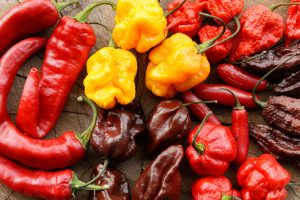According to multiple outlets, a Sterling VA, Chipotle restaurant has closed due to what looks like a foodborne illness outbreak. Folks are speculating that it might be norovirus. And by folks, I mean Chipotle.
Huffpo reports,
After voluntarily closing a restaurant in Sterling, Virginia, after multiple customers reported falling ill, Chipotle said it plans to reopen the burrito spot on Tuesday.
Eight customers who ate at the location between July 14 and 15 filed reports on the food safety crowdsourcing website iwaspoisoned.com, indicating they suffered symptoms like diarrhea, nausea and vomiting.
According to the reports, at least two customers have been hospitalized.
“Norovirus does not come from our food supply, and it is safe to eat at Chipotle,” Jim Marsden, Chipotle’s executive director of food safety, said in an emailed statement. “We plan to reopen the restaurant today.”
“We take every report of illness seriously,” Marsden added. “In accordance with our established protocols, our team is working to ensure the safety of our customers and employees, including voluntarily closing the restaurant yesterday to conduct a complete sanitization.”
Uh, Jim, noro can come from the food supply. Yours and others’. It has even been linked to lettuce distribution. It certainly sounds like this is localized (like most noro is), but seems a bit early for certainty statements like this. Oh, and noro can definitely be foodborne. Sure, there’s likely a lot of person-to-person transmission out there but a couple of years ago my man Aron Hal of CDCl (and colleagues) looked at foodborne noro outbreaks in the U.S. They state that on average, 365 foodborne norovirus outbreaks were reported annually, resulting in an estimated 10,324 illnesses, 1,247 health care provider visits, 156 hospitalizations, and 1 death.
Safe is a promise.
From Business insider,
Here are some of the reports from iwaspoisoned.com related to the Sterling restaurant. All the reports were made from Sunday to Monday:
• Friday 7/14: Daughter and friends went to Chipotle Saturday 7/15: stomach pains and nausea started in morning Saturday 7/15: violently sick, puking, diarrhea, severe pain, overnight into Sunday. Friends ill as well with one friend also in ER. Sunday 7/16: Hospital visit for dehydration, nausea, pain Monday 7/17: severe pain, trauma pain This is the worst that I have ever seen. Severe food borne illnesses can cause long-term damage to the gastro-intestinal track. This was BAD!
• I ate a chicken bowl at 6ish and the rest at 11 pm Friday and then woke up Sunday morning with diarrhea and was nauseous
• Wife and I ate chicken bowls Friday night. Puking brains out Saturday night and Sunday.
• Ate salad bowl on Friday at 1230pm, became ill at 3pm on Saturday. Three up multiple times, had fever, dizziness, etc. Salad bowl with chicken, Pico, beans, medium salsa, corn
• My husband and I both had chicken around 7:00 on Friday, July 14th. Over 24 hours later, we both started vomiting. We are still experiencing symptoms as of Monday morning.
Chicken bowl – around 6 pm on 7.15.2017
• My husband and I shared a burrito bowl last night for dinner around 6:30 PM. It had rice, chicken, corn, pico, sour cream, cheese, medium salsa. At around midnight my husband woke up vomiting violently. Less than an hour later I began vomiting as well. We have since continued vomiting in addition to having diarrhea, stomach pains, dizziness upon standing, and low grade fevers. Chipotle was the only thing we both ate yesterday.
• My Son and I both had burrito bowls and became violently ill within hours of each other. He was visiting from college. Chipotle was the only food item we both ate that day. Violent stomach cramps, diarrhea, vomiting. Violently ill. Same exact symptoms Burrito bowl. Steak, rice, green peppers and onions, guacamole, cheese. Violently ill.
Full disclosure, I’ve been collaborating with the iwaspoisoned.com guy, Patrick Quade over the past couple of years through NoroCORE.
Shares plummeted more than 5 percent after the illnesses were reported.











